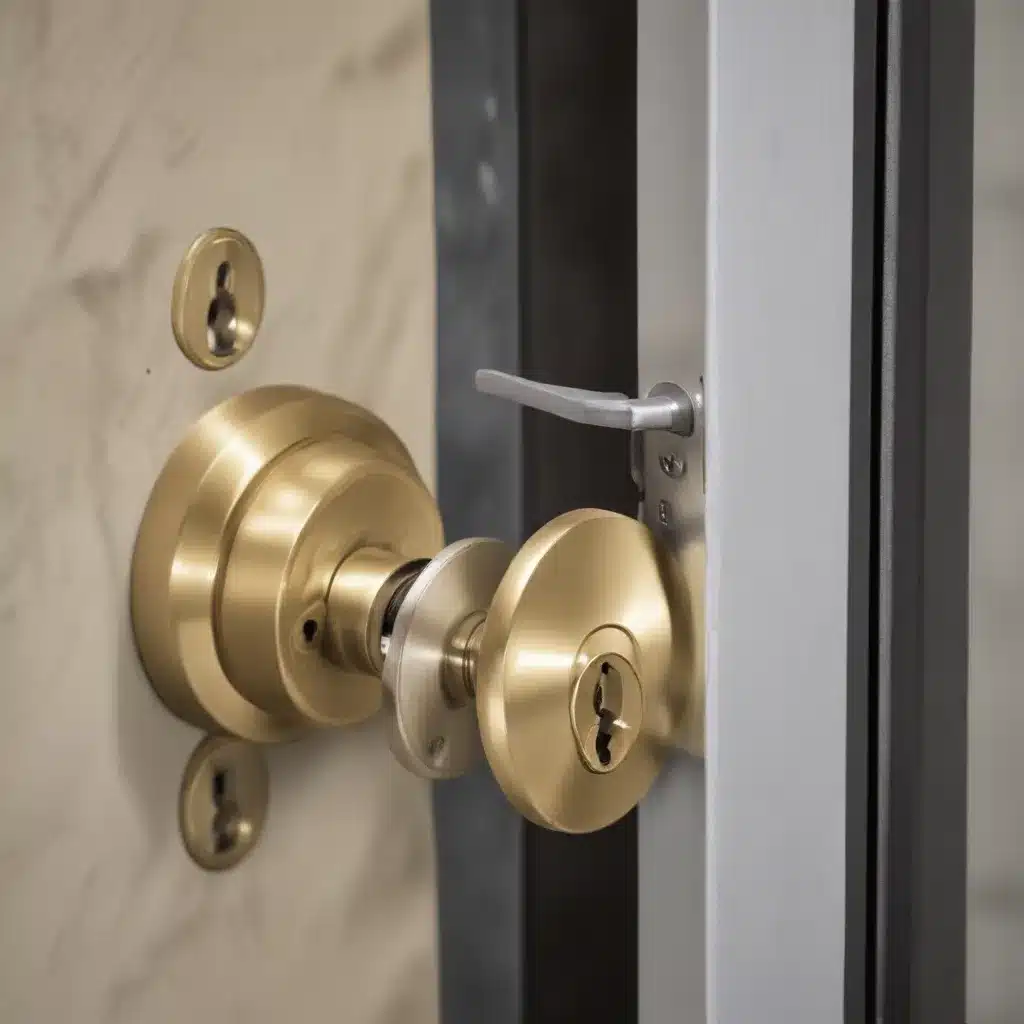
‘Commercial Lock Maintenance Optimization: Unlocking Reliable Performance’
Commercial Lock Maintenance Optimization: Unlocking Reliable Performance
As an experienced locksmith serving the Washington, D.C. area, I’ve seen firsthand the critical role that well-maintained commercial locks play in ensuring the security and efficiency of businesses. From high-traffic retail spaces to sensitive government facilities, the proper functioning of locks is paramount to safeguarding assets, personnel, and operations. In this comprehensive article, I’ll share insights on advanced lock installations, emergency services, and key solutions tailored to the unique demands of the D.C. commercial landscape.
Lock Hardware and Components
The foundation of any reliable commercial lock system lies in the hardware and components that make up the locking mechanism. Mastering the intricacies of lock mechanisms, locking devices, and hardware accessories is essential for implementing effective maintenance and optimization strategies.
Lock Mechanisms: The inner workings of a lock, including the pin tumblers, springs, and plug, are the core elements that determine its functionality and security. Proper lubrication, adjustment, and repair of these components are crucial to ensuring smooth operation and tamper resistance.
Locking Devices: From traditional deadbolts and padlocks to more advanced electronic and keyless entry systems, the selection of the appropriate locking device is critical. Understanding the unique features, strengths, and limitations of each type is key to deploying the right solution for a commercial application.
Hardware Accessories: Complementary hardware like hinges, strikes, and door closers play a vital role in the overall performance and longevity of a commercial lock system. Maintaining these ancillary components is just as important as caring for the lock itself.
Lock Maintenance Practices
Keeping commercial locks in peak condition requires a comprehensive approach to maintenance, encompassing regular inspection, proactive adjustments, and timely repairs or replacements.
Inspection and Evaluation: Thorough, periodic inspections are the foundation of any effective lock maintenance program. Assessing the condition of internal components, testing functionality, and identifying potential points of failure allow for early intervention and prevention of larger issues.
Lubrication and Adjustment: Proper lubrication of moving parts, such as the lock cylinder and latch mechanism, helps reduce wear and ensure smooth, reliable operation. Additionally, fine-tuning adjustments to components like door closers can optimize the lock’s performance and longevity.
Repair and Replacement: Despite the best preventative measures, locks may occasionally require more extensive repair or even full replacement. Addressing issues like worn tumblers, damaged springs, or malfunctioning electronic controls in a timely manner is crucial to maintaining the overall integrity of the commercial lock system.
Optimization Strategies
Unlocking the full potential of commercial lock maintenance requires a strategic, proactive approach. By implementing optimization strategies centered on preventative measures and data-driven performance metrics, businesses can enhance the reliability, efficiency, and cost-effectiveness of their locking systems.
Preventative Maintenance: Developing and adhering to a comprehensive preventative maintenance program is the cornerstone of lock optimization. This includes regularly scheduled inspections, proactive component replacements, and meticulous inventory management to ensure the availability of necessary spare parts.
Performance Metrics: Tracking key performance indicators, such as reliability, efficiency, and cost-effectiveness, can provide valuable insights to guide lock maintenance and optimization efforts. Analyzing metrics like downtime, repair frequency, and life-cycle costs can help identify areas for improvement and inform data-driven decision-making.
Commercial Facility Applications
The diverse nature of commercial facilities in the Washington, D.C. area requires a tailored approach to lock maintenance and optimization. Addressing the unique security and operational needs of various sectors, from retail and hospitality to industrial and institutional settings, is essential for ensuring comprehensive protection and efficient operations.
Retail and Hospitality: Storefront entrances, hotel room locks, and office suites in the retail and hospitality sectors demand lock solutions that balance security, accessibility, and aesthetic appeal. Maintaining these locks to the highest standards is crucial for safeguarding assets, providing a welcoming environment for customers and guests, and ensuring the smooth flow of daily operations.
Industrial and Institutional: Commercial facilities like warehouses, schools, and government buildings face distinct lock-related challenges, such as the need for robust security, compliance with safety regulations, and the efficient management of high-traffic access points. Optimizing the lock systems in these environments requires a deep understanding of the specific requirements and the implementation of specialized maintenance protocols.
Regulatory Compliance
Navigating the complex landscape of safety standards and security regulations is a critical aspect of commercial lock maintenance and optimization. Ensuring compliance with building codes, fire codes, and accessibility guidelines, as well as adhering to access control and key management regulations, is essential for maintaining a secure and compliant commercial facility.
Safety Standards: Locks play a pivotal role in ensuring the safety of building occupants, particularly in emergency situations. Adhering to local building and fire codes, as well as accessibility guidelines like the Americans with Disabilities Act (ADA), is crucial for protecting lives and avoiding costly penalties.
Security Regulations: Commercial facilities, especially those in sensitive industries or government settings, must comply with stringent security regulations governing access control, key management, and audit requirements. Maintaining the integrity of these systems through proper lock maintenance and optimization is vital for safeguarding assets and sensitive information.
As an experienced locksmith serving the Washington, D.C. area, I’ve seen firsthand the critical importance of well-maintained commercial locks in ensuring the security, efficiency, and compliance of businesses across various sectors. By understanding the key hardware components, implementing comprehensive maintenance practices, and adopting optimization strategies, commercial facility managers can unlock the full potential of their locking systems, ultimately enhancing the overall performance and reliability of their operations. For more information or assistance with your commercial lock needs, please visit Local Locksmith Washington DC.


